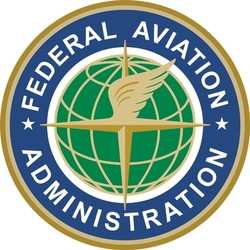Tue, Sep 30, 2014
Advisory Circular AC 90-116 Makes It Clear This Is Not Just A Green Light Carry A Passenger During Phase 1 Flight Testing
EAA has issued a press release informing its members that the FAA recently released AC 90-116, the Additional Pilot Program (APP) for Phase I flight testing. EAA advocacy and safety staff worked closely with members of EAA’s Homebuilt Aircraft Council, Safety Committee, and the FAA to craft the program.

It is now allowed for homebuilders to have a qualified additional pilot on board their aircraft during Phase I test flights. Before this program, builders were only permitted to have “required crew” aboard for initial flights, which usually meant that every Phase I E-AB aircraft was legally required to be flown solo.
This policy change comes after years of data suggesting that the most accidents in the E-AB fleet occur in aircraft during their first eight hours of operation, and that the majority of those accidents were related to pilot loss of control and were preventable. EAA and FAA hope to drastically reduce the rate of these accidents by having an appropriately qualified and experienced additional pilot on board the aircraft with the builder who can fly the aircraft safely, even in the face of unexpected rigging problems or engine stoppages.
The APP is a completely voluntary alternative program, and builders who want to undertake the first flights of their aircraft alone are not affected in any way. The program is currently available to builders of most E-AB kits with manufacturer recommended engine installations.
“This is the first time that builders can get the best of both worlds: going airborne on the plane’s first flights and having an experienced test pilot on board to add an additional layer of safety,” said Tom Charpentier, EAA government advocacy specialist. “The APP is a great example of a program that is a constructive response to safety data, and it has significant potential to reduce the number of Phase I accidents for our community. We hope this will set the stage for additional positive reforms in the future.”
Upon a quick review by ANN staff, it is rapidly apparent that this advisory circular is complex and must be carefully read before adding an additional crew member during phase 1 flight testing of an experimental-amateur built
More News
He Attempted To Restart The Engine Three Times. On The Third Restart Attempt, He Noticed That Flames Were Coming Out From The Right Wing Near The Fuel Cap Analysis: The pilot repor>[...]
Make Sure You NEVER Miss A New Story From Aero-News Network Do you ever feel like you never see posts from a certain person or page on Facebook or Instagram? Here’s how you c>[...]
From 2009 (YouTube Edition): Leading Air Show Performers Give Their Best Advice for Newcomers On December 6th through December 9th, the Paris Las Vegas Hotel hosted over 1,500 air >[...]
Aero Linx: NASA ASRS ASRS captures confidential reports, analyzes the resulting aviation safety data, and disseminates vital information to the aviation community. The ASRS is an i>[...]
“For our inaugural Pylon Racing Seminar in Roswell, we were thrilled to certify 60 pilots across our six closed-course pylon race classes. Not only did this year’s PRS >[...]
 NTSB Final Report: Rutan Long-EZ
NTSB Final Report: Rutan Long-EZ ANN FAQ: Turn On Post Notifications
ANN FAQ: Turn On Post Notifications Classic Aero-TV: ICAS Perspectives - Advice for New Air Show Performers
Classic Aero-TV: ICAS Perspectives - Advice for New Air Show Performers ANN's Daily Aero-Linx (06.28.25)
ANN's Daily Aero-Linx (06.28.25) Aero-News: Quote of the Day (06.28.25)
Aero-News: Quote of the Day (06.28.25)



